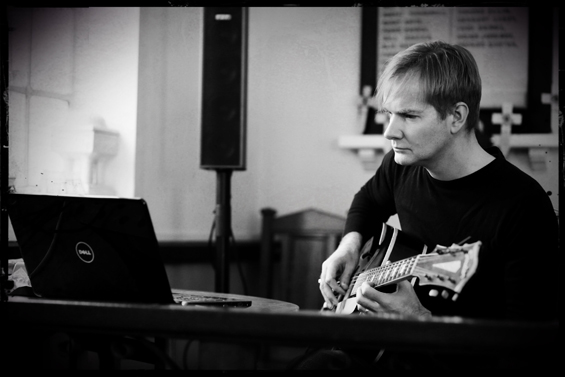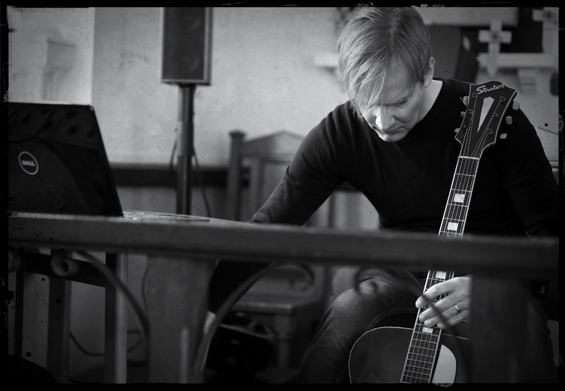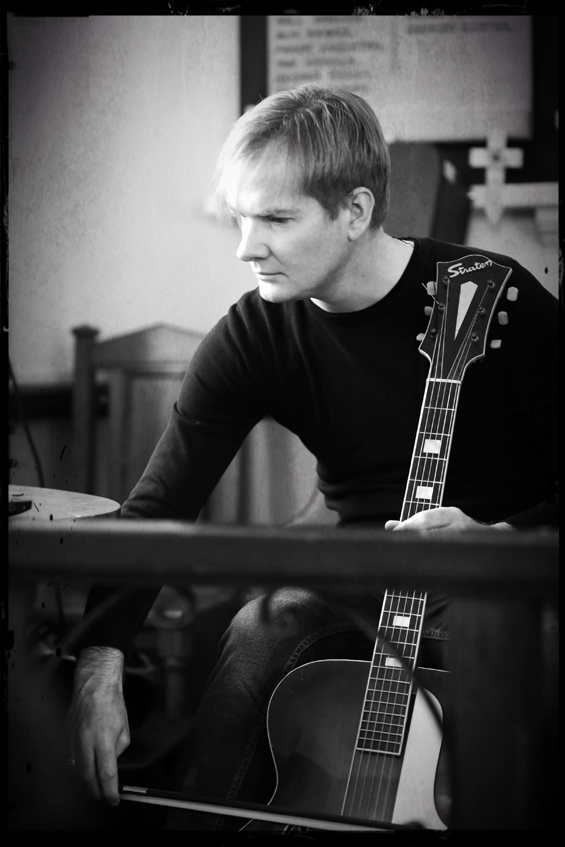Articles
Adrian Lane
Asaf Sirkis
Zen Land
Albums
Aerosol
A Guide For Reason
Bang On A Can All-Stars
Hafdís Bjarnadóttir
David Chesky
Alex Cobb
Container
Max Corbacho
Crisopa
DJ Cam
Döring & Korabiewski
Emißatett
Benjamin Finger
Fink
Fjordne
Gore Tech
Rachel Grimes
Hollan Holmes
Hosomi & Hatakeyama
Human Suits
Ayn Inserto
Terje Isungset
Adrian Lane
Valentina Lisitsa
Branford Marsalis Quartet
Multicast Dynamics
Naph
Networks
O'Donnell with Kent
Yui Onodera
Onodera & Bondarenko
Paniyolo
Petrels
Prefuse 73
Steve Roach
Rothenberg and Erel
R. Schwarz
Shiggajon
Stetson and Neufeld
Satoshi Tomiie
Gareth Whitehead
Zen Land
Compilations / Mixes
Francesco Tristano
EPs / Cassettes / DVDs / Mini-Albums / Singles
Four Hands
Heights & Worship
My Home, Sinking
Neveready
Prefuse 73
RSD

FIVE QUESTIONS WITH ADRIAN LANE
Anyone writing about Adrian Lane will probably begin by noting the parallels between his visual art and music production sides. But beyond being a convenient hook for the journalist, it naturally makes sense to do so when the working processes of the two are, by Lane's own admission, symbiotic. According to the Leigh On Sea-based artist, he creates a work by methodically building up layers, whether it be one colour added to another in an abstract or landscape painting or the phrase of one instrument added to a phrase by a different instrument. What makes Lane's medieval-classical material even more compelling is that he assembles it using acoustic instruments such as the bowed psaltery, zither, violin, banjo, glockenspiel, and piano, resulting in music that sounds as if it's coming to us from a distant era and is all the more appealing for doing so. He's no luddite, though; the tracks featured on Branches Never Remember, his third album for Preserved Sound, were constructed using laptop-based technology. Lane recently stole time away from his art-making endeavours to discuss the new recording along with other music-related matters.
1. As bio-related info about you doesn't seem to be all that plentiful, let's start by finding out a little bit about you. Did you formally study music (composition and performance) at college, how long have you been creating music, and where are you living now?
I have never formally studied music. I went to university to study art, and I think that has informed my music in many ways; my working methods when producing music and when painting are symbiotic and often follow largely the same processes. Often a painting will have the same title as a piece of music I'm working on, particularly when there are paintings and pieces of music in progress simultaneously. As a musician, I'm largely self-taught, my musical education having developed by being in various bands during the last thirty years. In the last fifteen years this has mainly involved playing guitar in a D.I.Y, post-punk, no-wave band, which is currently on indefinite hiatus as our singer is living in Japan; I'd like to think that when she returns to England we may do something again. Alongside playing in bands, I've always produced music on my own and in recent years this has taken over. Because of the multi-layered nature of my music, my live performances are quite different from the recordings; usually when I play live I use an acoustic guitar, a midi-keyboard, and a laptop triggering pre-recorded loops whilst playing over the top.
I live in a coastal town, Southend on Sea, in Essex, England where I work as an art teacher at a local college. The county of Essex has got a bad reputation in England, but it's actually not a bad place to live as quite a few interesting things are happening culturally; it's fairly limited in terms of venues for live music of the type that I play, but I have a feeling that that is true for a lot of places.

2. How have you managed to become so proficient on such a huge number of instruments, and where did your interest in instruments such as bowed psalteries, jangu, and zither come from?
Although it would be nice to believe I am proficient on many instruments, if I'm honest with myself I'd say I'm only really proficient on guitar. The complexities of my music come from the layering of the various parts, but each individual part is usually quite simple and I write each piece to be within my capabilities. My working methods can be quite forgiving as none of the instrumental parts are recorded from the start of the track to the finish but are recorded as fragments that are arranged as the piece is written. Most of the parts I forget how to play almost as soon as they're recorded, as mostly I record spontaneously to see what happens and then use the interesting bits.
I have a lot of acoustic instruments and have always been interested in picking up a new instrument and seeing what sounds I can get out of it. Apart from my guitar, most of the instruments are fairly inexpensive, so I can afford to take the risk. When I pick up a new instrument, I find I write differently because the unfamiliarity stops me from playing the standard shapes and patterns I might usually. The zither I use is really more of a toy, a small wooden instrument used in teaching music to children; however, taken out of that context it can sound really good. I have three bowed psalteries, and I first became interested in them through seeing one played on a video online; they seem to be mainly used in Appalachian music, and I thought put in a different context they could generate a more ethereal quality. I bought two of them second-hand and experimented with different strings to expand the palette of sounds I could get out of them. The jangu is a type of double-headed drum; it was a present from my wife who is Korean and is commonly used in Korean classical and traditional music. I really only use it to add basic accents to certain beats. I would certainly never describe myself as a percussionist; the more complex percussion on the recent album is played by Wil Proctor, who plays the frame drums. Wil is a fantastic musician who did study music formally and did a Master's degree in percussion in Bali.

3. Your music seems to possess an ‘out of time' character in its medieval-classical leanings. What accounts for your interest in this particular style and/or era of music?
I am interested in ‘Early Music,' and this originally came from listening to the music of Dead Can Dance and which led me to investigate their influences. I particularly like instruments of the viol family and especially some of the consort music written by John Jenkins and William Lawes; there are also some brilliant Viola Da Gamba pieces written by Johannes Schenck (all 17th Century). I really like the sound of the instruments and the way that unlike later classical music they do not use vibrato; the bowed psaltery also has no vibrato and I think that's one of the things that lends my music the medieval feel. Another thing that my music has in common with some early music is the use of a drone to underpin the composition, rather than the use of a sequence of chords. I'm interested in this music in terms of melody, harmony, and texture; I'm not particularly interested in the connotations that come with it: when I listen, I do not imagine a medieval or Elizabethan setting; rather I think in terms of the emotion in the same way I do a contemporary piece.
4. The titles of your musical compositions convey a strong connection to nature. In what ways does the natural world and the area where you live figure into your creative work?
I grew up in a village in rural Essex so am much more comfortable being somewhere I can easily get to wide, open spaces. I lived in London for a short time, and, although I like London, living there felt claustrophobic. The town where I live is fairly large with a population of about 175,000, but it is only a ten-minute drive to the countryside. I'm also within walking distance of the sea, so there are always open spaces around me. I think this is reflected in my music, and I certainly think they conjure a soundtrack to the natural environment rather than the urban. A few of the titles were inspired by an exhibition of the work of J.M.W Turner that I visited whilst writing; it was not so much the titles of his paintings as some of the comments and notes about the work that gave me the ideas. Turner is a painter whose work was very much inspired by the natural world so that resonated with me.
One of the tracks with an obvious reference to nature in the title is “To The Sea,” but the title actually came from a pun as the working title was just “C.” The piece developed when I put the low C string of a cello on my acoustic guitar and bowed that to create the drone.

5. To what degree is the creative process for you a matter of intuition as opposed to intellect? Do you methodically plan out each step of a given piece's construction (such as “No More Lost Chances,” one of the album's most haunting pieces), or does the music itself dictate the developmental path that you follow?
It's definitely a matter of intuition as opposed to intellect; I sometimes have a basic concept of what I'm going to do but each track usually starts with a fragment, a riff, or a melody that I record into the computer. I then pick up a different instrument and play something along to it and gradually build up layers reacting to each part as it develops. Although my music utilizes mainly acoustic instruments, my working methods rely heavily on modern technology. It's a kind of sound collage, albeit one that uses my own source material; lots of fragments are recorded and then moved around, layered until I achieve something that feels right, so it's very much the music itself that dictates the developmental path that I follow. To be specific, “No More Lost Chances” started as the piano piece that features at the end of the track; I then came up with the zither part and that gave it a different direction, so I ended up stripping away most of the piano and building up something that became more rhythmic and dynamic.
web site: ADRIAN LANE
June 2015
![]()